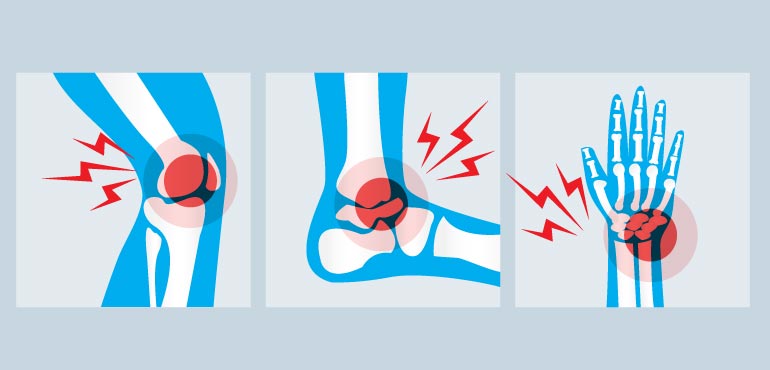Sports Injuries - How to Stay in the Game
Whether you're a weekend warrior or a competitive athlete, pushing your limits on the field can be exhilarating. But with exertion comes the risk of injury. Sports injuries are common, affecting athletes of all ages and skill levels.
Acute vs. Overuse Injuries
Sports injuries fall into two main categories:
- Acute Injuries: These occur suddenly due to a specific event, such as a fall, collision, or forceful movement. Examples include sprains (ligament tears), strains (muscle tears), fractures (broken bones), and dislocations (joints popping out of place).
- Overuse Injuries: These develop gradually over time due to repetitive stress on a particular body part. Repetitive throwing motions in baseball can lead to rotator cuff injuries in the shoulder while running can cause shin splints or stress fractures in the legs.
Common Injuries by Area
Awareness of injuries specific to different body regions can help you recognise early warning signs. Here's a quick rundown:
- Ankle: Sprains (especially common), Achilles tendon strains
- Knee: Sprains, strains (anterior cruciate ligament (ACL) or medial collateral ligament (MCL) tears), meniscus tears
- Shoulder: Rotator cuff injuries (tears, tendinitis), dislocations
- Elbow: Sprains, strains (tennis elbow), overuse injuries (golfer's elbow)
- Muscles: Strains, cramps
- Head: Concussions (a serious injury requiring immediate medical attention)
When to Seek Medical Attention: Don't Play Through the Pain
While some minor injuries might respond to home care, it's crucial to seek medical attention if you experience any of the following:
- Severe pain or inability to bear weight on the injured limb.
- Deformity or instability in the joint.
- Numbness or tingling in the affected area.
- Significant swelling or bruising.
- Suspected head injury (concussion) - symptoms like dizziness, confusion, or loss of consciousness require immediate medical evaluation.
Prevent Sports Injury
The best defence against sports injuries is a proactive approach. Here are some key strategies to incorporate into your routine:
- Warm-up and Cool-down: Always dedicate time to dynamic stretches before exercise and static stretches afterwards to improve flexibility and reduce muscle stiffness.
- Strength Training: Building strong muscles around joints provides stability and reduces the risk of injury.
- Proper Technique: Mastering the correct movements in your chosen sport is essential to avoid repetitive stress.
- Safety Equipment: Wear appropriate protective gear like pads, helmets, and mouth guards to minimise the impact of falls or collisions.
- Hydration and Nutrition: Staying well-hydrated and fueled with proper nutrition optimises your body's ability to recover and perform.
- Listen to Your Body: Don't push yourself beyond your limits. Take rest days and avoid overtraining to prevent fatigue-related injuries.
Treatment and Rehabilitation for Sports Injuries
I. Initial Management:
RICE Principle (Rest, Ice, Compression, Elevation): The cornerstone of initial injury management. It helps reduce inflammation, pain, and swelling, promoting healing.
- Rest: Avoid activities that aggravate the injury. Depending on the severity, this might involve complete rest or modified activity.
- Ice: Apply ice packs to the injured area for 15-20 minutes several times daily. Wrap the ice pack in a towel to prevent skin irritation.
- Compression: Use elastic bandages or wraps to compress and reduce swelling gently.
- Elevation: Elevate the injured limb above the heart to promote drainage of fluids and minimise swelling.
II. Medical Evaluation and Diagnosis:
A doctor will assess the injury through a physical examination and possibly imaging tests (X-rays, MRI) to determine the extent of the damage and recommend the appropriate treatment plan.
III. Rehabilitation:
Physical Therapy: This is the foundation of sports injury rehabilitation. A physical therapist will design a personalised program that focuses on:
- Pain Management: Techniques like ultrasound, electrical stimulation, and therapeutic massage can help manage pain and promote healing.
- Restoring Strength and Flexibility: Exercises will target the injured muscles and surrounding tissues to regain strength, flexibility, and range of motion.
- Improving Proprioception (Body Awareness): Exercises will help retrain the body's awareness of joint position and stability, which is crucial for preventing future injuries.
- Balance and Coordination Training: Exercises will improve balance and coordination, essential for safe and efficient movement.
IV. Medication:
- Pain relievers (over-the-counter or prescription) might be used to manage pain and inflammation.
- Anti-inflammatory medications might be prescribed to reduce inflammation around the injured area.
V. Surgery:
- In some cases, surgery might be necessary for severe injuries. This could involve repairing torn ligaments, tendons, or fractures.
- Following surgery, a comprehensive rehabilitation program is crucial for optimal recovery.
VI. Gradual Return to Sports:
Following a doctor's and physical therapist's guidance, it's essential to return to sports after an injury gradually. This allows the body time to heal properly and reduces re-injury risk.
VII. Additional Considerations:
- Bracing or Taping: Braces or taping might support the injured area and promote healing.
- Nutritional Support: A balanced diet of protein and essential nutrients is crucial for tissue repair and recovery.
- Mental Conditioning: Sports injuries can be mentally challenging. Maintaining a positive attitude and focusing on progress can aid recovery.
Sports injuries are a part of the athletic experience, but with proper knowledge and strategies, you can significantly reduce your risk. By incorporating preventative measures, being aware of warning signs, and seeking timely medical attention, you can quickly recover and return to enjoying the activities you love.









